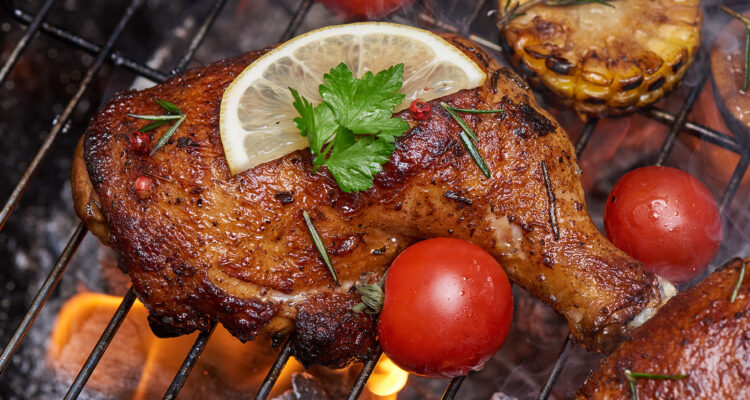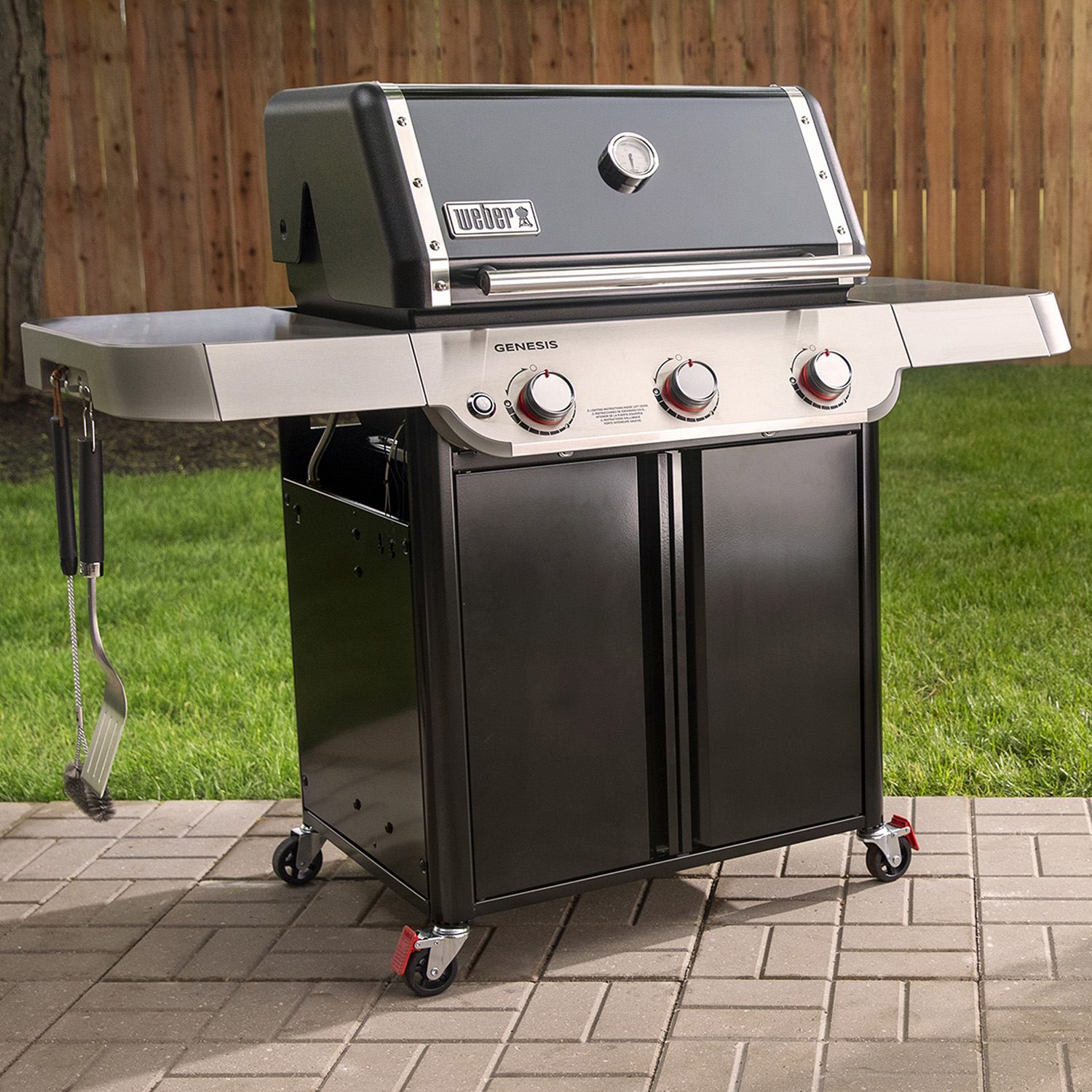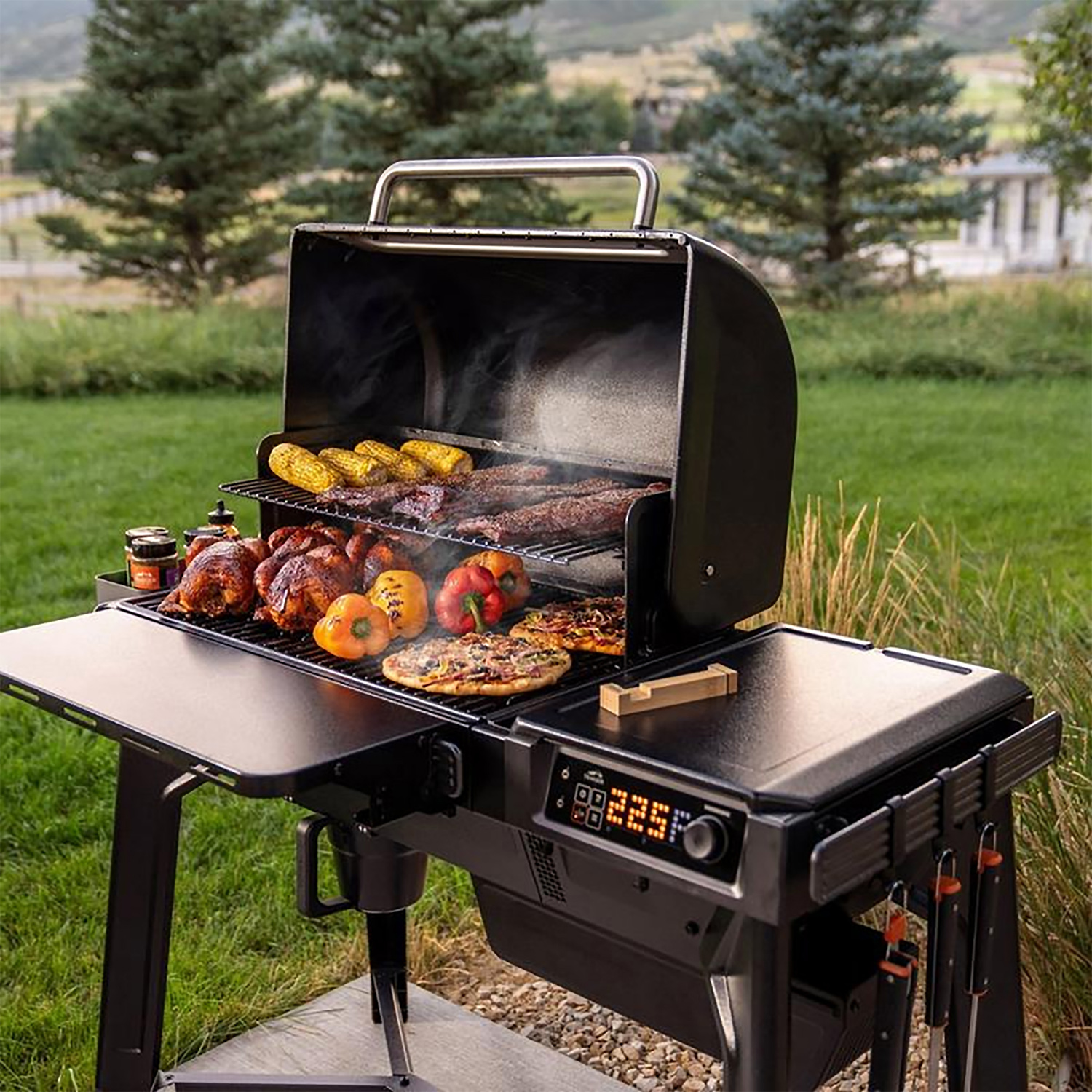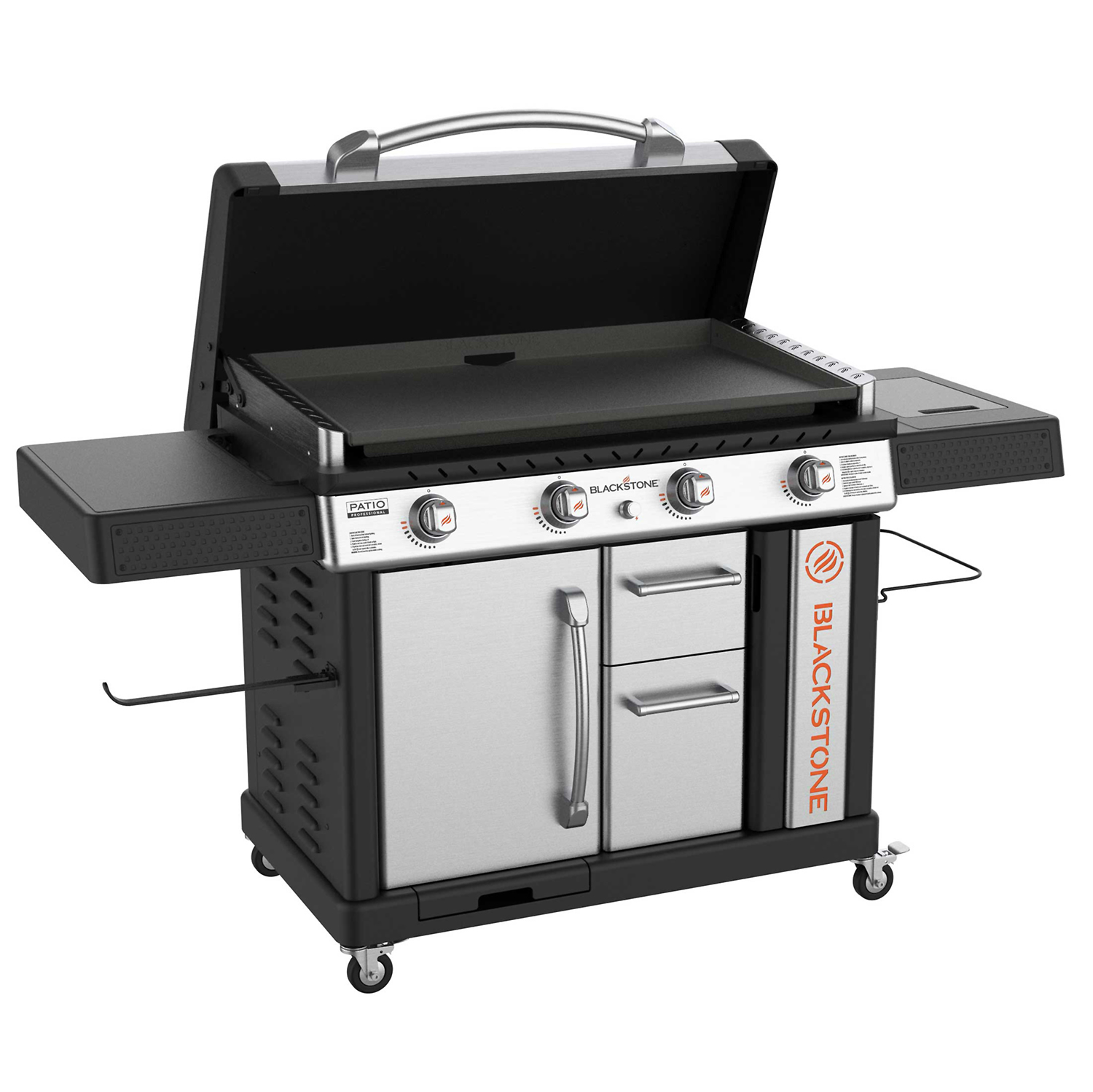Pros and Cons for Propane, Charcoal, Pellet and Griddle Cooking
Story by Kimberly Henry, NFM | Photos courtesy of Nebraska Furniture Mart
Whether you’re a seasoned backyard pitmaster or a weekend warrior at the grill, choosing the right cooking equipment can make all the difference in your outdoor culinary adventures. With so many types available — propane grills, charcoal grills, pellet smokers, and griddles — it helps to understand the strengths and limitations of each, along with which foods they cook best.
Propane Grills: Fast, Convenient, and Versatile
Pros: Propane grills are prized for their quick startup and easy heat control. With just the turn of a knob, you’re cooking within minutes. They maintain consistent temperatures, making them great for a wide range of foods and techniques — from high-heat grilling to indirect roasting. Many models are compact and portable, making them excellent companions for camping or tailgating. One propane tank can often last for several grilling sessions, adding to their convenience.
Best for: Steaks, chicken breasts, pork chops, burgers, hot dogs, and bratwurst. Propane grills offer the ideal heat level and control to get a perfect sear while retaining juiciness.
Cons: Despite the ease of use, propane grills come with a few drawbacks. Tanks can be bulky and heavy to transport, and you’ll need to monitor fuel levels regularly to avoid running out mid-grill. They’re also not ideal for low-and-slow smoking, and the burners and regulators may need occasional maintenance or replacement.
Charcoal Grills: Classic Flavor and High Heat
Pros: For many grilling purists, charcoal is the gold standard. These grills reach higher temperatures than propane, which makes them ideal for searing meat and achieving that unmistakable grilled flavor. You don’t need gas or electricity — just lump charcoal or briquettes, and maybe some wood chips for extra smoke flavor. With fewer moving parts, there’s less that can break or require maintenance.
Best for: Much like propane, charcoal grills shine with steaks, burgers, hot dogs, chicken, pork chops, and bratwurst. Their high heat and smoky profile make these meats taste restaurant-quality.
Cons: Charcoal requires more time to light and reach optimal cooking temperature. Managing the fire and heat zones takes some skill, making them less beginner-friendly. Post-grilling ash cleanup is required, and the smoke might be bothersome in tight or shared outdoor spaces.
Pellet Smokers: Set It and Forget It Machines
Pros: Pellet smokers offer a unique blend of convenience and flavor. Fueled by compressed wood pellets, they add rich, smoky notes to whatever you’re cooking — without the need for a traditional woodfire. They’re ideal for low-and-slow cooking, helping meat stay moist while soaking in flavor. Modern features like WiFIRE technology (on brands like Traeger) let you monitor and adjust your cook from a smartphone app, including temperature control, internal probes, timers, and even shut-down mode. This “set it and forget it” approach makes smoking more accessible than ever.
Best for: Brisket, pork shoulder, ribs, chicken drumsticks, and salmon. Anything that benefits from slow cooking and smoke absorption comes out beautifully on a pellet smoker.
Cons: Pellet grills don’t get as hot as other types, so you’ll miss out on a hard sear — making them less suitable for steaks, burgers, or hot dogs. The pellet hopper typically holds about 20 lbs, which may require refills during long, high-temp cooks. They also require a power source, limiting portability. And due to ventilation and fire safety, they need to be placed at least 18 inches from walls, which isn’t ideal for smaller patios or balconies.
Griddles: Flat-Top Versatility for Large Meals
Pros: Griddles offer multi-zone cooking — you can simultaneously run high, medium, and low heat across the surface. That makes them ideal for cooking a large variety of foods all at once. Want to make a complete breakfast with pancakes, eggs, and bacon? No problem. Griddles heat quickly, create a beautiful sear, and offer a cooking experience similar to a cast iron skillet, just on a larger scale.
Best for: Smash burgers, fajitas, hibachi-style meals, eggs, bacon, pancakes, and hash browns. Griddles shine when you need a flat, hot surface and space to cook for a crowd.
Cons: They aren’t suitable for everything. Thicker cuts of meat or items that benefit from slow cooking don’t fare as well. Griddles also require regular seasoning and maintenance to avoid rust, much like cast iron pans. And while not impossible to move, they are typically heavy and bulky, which can make storage and transport a challenge.
Which One Is Right for You?
Choosing the best outdoor cooker depends on your cooking style, preferred foods, and available space.
- For convenience and versatility: Go with a propane grill.
- For smoky flavor and searing power: Embrace the charcoal experience.
- For long, flavorful cooks with tech-savvy ease: Invest in a pellet smoker.
- For breakfast feasts and high-volume grilling: A griddle is your best bet.
In the end, there’s no one-size-fits-all. Many backyard chefs end up with two or more of these tools to cover all their culinary needs — and maximize flavor, flexibility, and fun.









